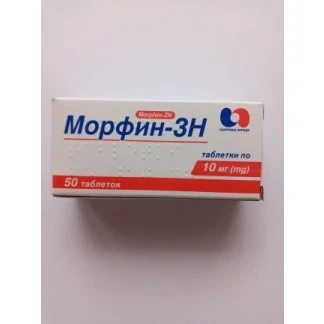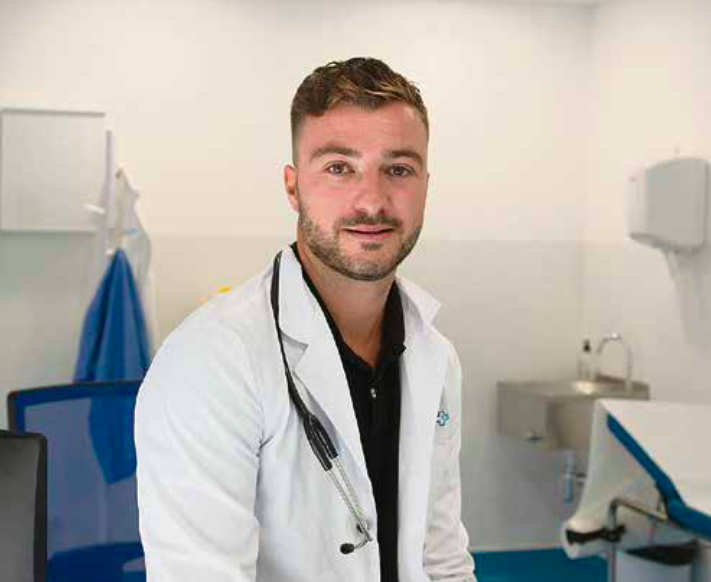

MORFIN-ZN

Ask a doctor about a prescription for MORFIN-ZN

How to use MORFIN-ZN
INSTRUCTIONS FOR MEDICAL USE OF THE MEDICINAL PRODUCT ESCAPELLE (ESCAPELLE)
Composition
active substance: levonorgestrel; 1 tablet that disperses in the oral cavity, contains levonorgestrel 1.5 mg; excipients: mannitol (E 421), pre-gelatinized starch, low-substituted hydroxypropylcellulose, crospovidone type B, sodium stearyl fumarate, orange opadry (hypromellose, titanium dioxide (E 171), yellow western FCF (E 110), iron oxide yellow (E 172)), indigocarmine (E 132)), colloidal anhydrous silicon dioxide, aspartame (E 951), orange flavor.
Pharmaceutical Form
Tablets that disperse in the oral cavity.
Main Physico-Chemical Properties
Pale orange with dark inclusions, round, biconvex tablets with a diameter of 6 mm. One side has engraving "GC3", the other side is without engraving. With a light orange smell.
Pharmacotherapeutic Group
Sex hormones and modulators of the genital system. Emergency contraceptives. ATC code G03A D01.
Pharmacological Properties
Pharmacodynamics
The exact mechanism of action of the Escapel preparation is unknown. At the recommended doses, levonorgestrel affects ovulation and fertilization, if sexual intercourse occurred during the pre-ovulatory phase of the menstrual cycle, i.e., at the moment of the highest probability of fertilization. With started implantation, the preparation is not effective.
Efficacy. According to the results of a previously conducted clinical study, 750 mcg of levonorgestrel (in the form of two doses of 750 mcg, taken at an interval of 12 hours) prevents pregnancy in 85% of cases. Probably, the more time has passed between sexual intercourse and the intake of the preparation, the lower its effectiveness (95% within the first 24 hours, 85% - in the period from 24 to 48 hours and 58% - in the period from 48 to 72 hours).
According to the results of a previously conducted clinical study, 2 tablets of levonorgestrel at a dose of 750 mcg, taken simultaneously (within 72 hours after unprotected sexual intercourse), prevent pregnancy in 84% of cases. There are no differences in the frequency of pregnancy in women who took the preparation on the third or fourth day after unprotected sexual intercourse (p > 0.2).
Influence of Excess Body Weight / High Body Mass Index (BMI) of the Patient on the Contraceptive Efficacy of the Preparation
There are limited data that require further confirmation regarding the influence of excess body weight / high body mass index (BMI) of the patient on the contraceptive efficacy of the preparation. In three studies by the World Health Organization, no trend towards a decrease in efficacy with increasing body weight / BMI was observed (see Table 1), while in two other studies, a decrease in efficacy with increasing body weight / BMI was observed (see Table 2). Both meta-analyses did not include cases of taking the preparation more than 72 hours after unprotected sexual intercourse (off-label use) and cases where unprotected sexual intercourse occurred after taking the preparation.
| Indicators | Women with low body weight (BMI 0-18.5 kg/m2) | Women with normal body weight (BMI 18.5-25 kg/m2) | Women with excess body weight (BMI 25-30 kg/m2) | Women with obesity (BMI ≥ 30 kg/m2) |
| Total number | 600 | 3952 | 1051 | 256 |
| Number of pregnancies | 11 | 39 | 6 | 3 |
| Pregnancy rate | 1.83% | 0.99% | 0.57% | 1.17% |
| Confidence interval | 0.92-3.26 | 0.70-1.35 | 0.21-1.24 | 0.24-3.39 |
| Indicators | Women with low body weight (BMI 0-18.5 kg/m2) | Women with normal body weight (BMI 18.5-25 kg/m2) | Women with excess body weight (BMI 25-30 kg/m2) | Women with obesity (BMI ≥ 30 kg/m2) |
| Total number | 64 | 933 | 339 | 212 |
| Number of pregnancies | 1 | 9 | 8 | 11 |
| Pregnancy rate | 1.56% | 0.96% | 2.36% | 5.19% |
| Confidence interval | 0.04-8.40 | 0.44-1.82 | 1.02-4.60 | 2.62-9.09 |
Pharmacokinetics
When taken orally, levonorgestrel is quickly and almost completely absorbed.
According to a study involving 16 patients, 2 hours after a single dose of levonorgestrel at a dose of 1.5 mg, the Cmax value was 18.5 ng/ml.
After reaching the maximum concentration, the level of levonorgestrel in the blood decreases, the average half-life is approximately 26 hours.
It is excreted in the form of metabolites with urine and feces in equal proportions. The biotransformation of levonorgestrel is carried out by a metabolic pathway characteristic of steroids. In the liver, levonorgestrel is hydroxylated and excreted from the body in the form of glucuronide conjugates. Pharmacologically active metabolites of levonorgestrel are unknown.
Levonorgestrel enters into a bond with albumin and globulin that binds sex hormones (SHBG). 1.5% of the total amount in plasma is in the form of free steroid,
65% are specifically bound to SHBG.
The absolute bioavailability is 100% of the taken dose.
0.1% of the taken dose of the preparation enters the body of the infant with breast milk.
Clinical Characteristics
Indications
For emergency oral contraception within the first 72 hours after sexual intercourse, during which no methods of contraception were used or the used method of contraception was not reliable enough.
Contraindications
Increased sensitivity to any of the components of the preparation, severe liver failure; pregnancy.
Interaction with Other Medicinal Products and Other Types of Interactions
The metabolism of levonorgestrel is enhanced when used simultaneously with liver enzyme inducers, mainly inducers of the CYP3A4 enzyme system. When used simultaneously with efavirenz, the level of levonorgestrel in the blood plasma (AUC) decreased by approximately 50%.
Medicinal products containing the following active substances may decrease the concentration of levonorgestrel in the blood plasma: barbiturates (including primidone); phenytoin; carbamazepine; herbal preparations containing Hypericum perforatum (St. John's wort); rifampicin; ritonavir; rifabutin; griseofulvin.
Women who have taken enzyme-inducing drugs during the last 4 weeks and need emergency contraception should consider using non-hormonal emergency contraceptives (e.g., a copper-containing intrauterine system). If a woman is unable or unwilling to use a copper-containing intrauterine system, taking a double dose of levonorgestrel (3000 mcg of levonorgestrel within 72 hours after unprotected sexual intercourse) is an alternative option, although this specific combination (double dose of levonorgestrel during the use of microsomal liver enzyme inducers) has not been studied.
Preparations containing levonorgestrel may increase the toxicity of cyclosporine by inhibiting its metabolism.
Special Warnings and Precautions for Use
Emergency contraception is intended for emergency situations. It should not be used as a regular method of contraception. Repeated use of Escapel tablets during the same menstrual cycle should be avoided to prevent cycle disturbances.
Emergency contraceptive preparations do not prevent pregnancy in all cases. The likelihood of fertilization is high in cases where the time of sexual intercourse is precisely unknown and when more than 72 hours have passed since unprotected sexual intercourse during one menstrual cycle. In such cases, taking an Escapel tablet after a second sexual intercourse will not produce the desired result. If menstruation is delayed for more than 5 days, or if menstruation occurs on time but is unusual, or if there is a suspicion of pregnancy for any other reason, a gynecological examination should be performed to rule out pregnancy, including ectopic pregnancy. The absolute risk of ectopic pregnancy is likely to be low, since levonorgestrel prevents ovulation and fertilization. Ectopic pregnancy can persist despite the occurrence of uterine bleeding. If pregnancy occurs after taking Escapel tablets, the possibility of ectopic pregnancy should be considered, especially in women who have a history of ectopic pregnancy, surgery on the pelvic organs, or inflammation of the pelvic organs.
Therefore, levonorgestrel is not recommended for women who are at risk of developing ectopic pregnancy (having a history of salpingitis or ectopic pregnancy).
Severe liver function disorders are a contraindication to the use of Escapel tablets.
Severe malabsorption in the gastrointestinal tract (e.g., Crohn's disease) reduces the effectiveness of the contraceptive preparation.
The use of the preparation usually does not disrupt the regularity and normal nature of menstruation. However, sometimes an early or late onset of menstruation is possible. After using emergency contraception, it is recommended to consult a doctor to select or adjust regular contraception. If Escapel was used due to errors in regular hormonal contraception, and as a result, menstruation does not begin within the corresponding seven-day period, pregnancy should be ruled out.
There are limited data that require further confirmation that the contraceptive efficacy of the Escapel preparation may decrease with an increase in the patient's body weight or body mass index (BMI) (see the "Pharmacodynamics" section). In case of need, a woman, regardless of her body weight and BMI, should take emergency contraception as soon as possible after unprotected sexual intercourse.
Compared to regular contraceptives, Escapel tablets are less effective. Women who often resort to emergency contraception should consult a doctor to choose a method of regular contraception.
Emergency contraception does not replace the need for protection against sexually transmitted diseases.
This medicinal product contains the yellow western FCF (E 110) dye, which can cause allergic reactions.
This medicinal product contains 0.8 mg of aspartame (E 951) in each tablet that disperses in the oral cavity. After oral administration, aspartame is hydrolyzed in the gastrointestinal tract. One of the main products of hydrolysis is phenylalanine, which can be harmful to people with phenylketonuria (PKU).
This medicinal product contains less than 1 mmol (23 mg) of sodium per tablet that disperses in the oral cavity, i.e., it is practically sodium-free.
Use During Pregnancy or Breastfeeding
Pregnancy
Taking Escapel tablets during pregnancy is contraindicated. The preparation does not cause termination of pregnancy. According to epidemiological studies, in the event of pregnancy occurring against the background of emergency contraception, the preparation does not have an adverse effect on the fetus, but there are no clinical data on the possible consequences of taking levonorgestrel in doses exceeding 1.5 mg.
Breastfeeding
Levonorgestrel penetrates into breast milk. The potential impact of levonorgestrel on the child can be reduced by taking the preparation immediately after breastfeeding or abstaining from breastfeeding for 8 hours after taking the preparation.
Fertility
Levonorgestrel increases the likelihood of menstrual cycle disturbances, which in some cases leads to earlier or later ovulation. These changes can affect the dates of the fertile period, but there is no information on fertility during long-term observation.
Ability to Influence the Speed of Reaction when Driving Vehicles or Operating Other Mechanisms
Studies on the possible impact on the ability to drive vehicles or operate other mechanisms have not been conducted.
Method of Administration and Dosage
Method of Administration
For oral administration.
The tablet that disperses in the oral cavity should be pushed out of the blister with dry hands and placed on the tongue, where it will dissolve and can be swallowed with saliva.
The tablet that disperses in the oral cavity can be used even in situations where there is no liquid available.
Dosage
1 tablet should be taken as soon as possible after unprotected sexual intercourse, preferably within the first 12 hours and no later than 72 hours (see the "Pharmacodynamics" section).
Women who have taken enzyme-inducing drugs during the last 4 weeks and need emergency contraception are recommended to use non-hormonal contraceptives (e.g., a copper-containing intrauterine system). If a woman is unable or unwilling to use a copper-containing intrauterine system, taking a double dose of levonorgestrel (2 tablets at once) is an alternative option (see the "Interaction with Other Medicinal Products and Other Types of Interactions" section).
If vomiting occurs within 3 hours after taking the tablet, an additional tablet should be taken.
Escapel tablets that disperse in the oral cavity can be taken on any day of the menstrual cycle, provided that the previous menstruation was normal.
After using emergency contraception, it is recommended to use a local barrier method (e.g., condoms, diaphragms, spermicides, cervical caps) until the next menstruation. The use of Escapel tablets that disperse in the oral cavity is not a contraindication to continuing regular oral hormonal contraception.
Children
Escapel tablets that disperse in the oral cavity are not intended for use in prepubertal children for emergency contraception.
Overdose
There are no data on severe adverse reactions after taking high doses of the preparation. Overdose may cause nausea and withdrawal bleeding. There is no specific antidote, treatment is symptomatic.
Adverse Reactions
The most common undesirable effect when using Escapel was nausea.
| System Organ Class according to MedRA 16.0 | Adverse Reactions by Frequency | |
| very common (≥ 10%) | common (³1%–<10%) | |
| From the nervous system | headache | dizziness |
| From the gastrointestinal tract | nausea, lower abdominal pain | diarrhea, vomiting |
| From the reproductive system and breast | non-menstrual bleeding | delayed menstruation for more than 7 days, irregular menstruation, breast engorgement |
| Systemic disorders | increased fatigue | |
A temporary change in the nature of menstruation is possible. In most women, disturbances in menstrual cycle duration occur within 5 days. If menstruation is delayed for more than 5 days, pregnancy should be ruled out.
During post-marketing surveillance, the following additional adverse reactions were noted:
- from the gastrointestinal tract: rare (< 1/10000): abdominal pain;
- from the skin and subcutaneous tissue: rare (< 1/10000): rash, urticaria, itching;
- from the reproductive system and breast: rare (< 1/10000): pelvic pain, dysmenorrhea;
- systemic disorders: rare (< 1/10000): facial edema.
Reporting Suspected Adverse Reactions
Reporting adverse reactions after the registration of a medicinal product is important. This allows monitoring the benefit-risk ratio of the use of this medicinal product. Medical and pharmaceutical workers, as well as patients or their legal representatives, should report all cases of suspected adverse reactions and lack of efficacy of the medicinal product through the automated information system for pharmacovigilance at: https://aisf.dec.gov.ua/.
Shelf Life
2 years.
Storage Conditions
Store in the original packaging to protect from moisture. The preparation should be stored in a place inaccessible to children.
Packaging
1 tablet in a blister pack. 1 blister pack in a pouch made of laminated aluminum foil; 1 pouch in a cardboard box.
Release Category
By prescription.
Manufacturer
Gedeon Richter Ltd.
Manufacturer's Location and Address of Activity
H-1103, Budapest, Gyömrői út 19-21, Hungary.
- Country of registration
- Active substance
- Prescription requiredYes
- Manufacturer
- This information is for reference only and does not constitute medical advice. Always consult a licensed doctor before taking any medication. Oladoctor is not responsible for medical decisions based on this content.
- Alternatives to MORFIN-ZNDosage form: solution, 10 mg/ml; 1 ml in ampouleActive substance: morphineManufacturer: ХБМ Фарма с.р.о.Prescription requiredDosage form: tablets, tablets 5mgActive substance: morphineManufacturer: Товариство з обмеженою відповідальністю "Харківське фармацевтичне підприємство "Здоров'я народуPrescription requiredDosage form: solution, 1 ml solution contains 8.6 mg morphine hydrochlorideActive substance: morphine
Alternatives to MORFIN-ZN in other countries
The best alternatives with the same active ingredient and therapeutic effect.
Alternative to MORFIN-ZN in Польша
Alternative to MORFIN-ZN in Испания
Online doctors for MORFIN-ZN
Discuss dosage, side effects, interactions, contraindications, and prescription renewal for MORFIN-ZN – subject to medical assessment and local rules.














